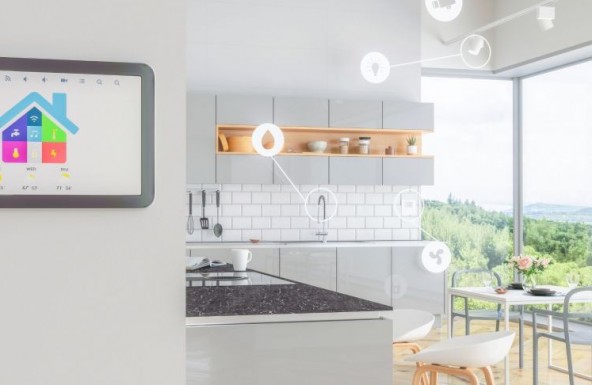Artificial Intelligence in the Architecture of the Future
The constant evolution of the world presents us with new challenges, driving us to seek innovative solutions. In this quest, sustainable architecture emerges as a vital response to address the environmental issues we currently face. Various strategies and uses of technology have been implemented to construct ecological structures and sustainable buildings.
Among the most promising tools, artificial intelligence has taken the stage as a versatile system capable of learning, adapting, and offering informed solutions in various sectors, including architecture. From designing alternative solutions to predicting the long-term performance of a building, artificial intelligence is redefining the architectural landscape.
We can benefit from artificial intelligence to create eco-friendly buildings, using its capacity to analyze key factors of sustainable design:
Energy Efficiency: AI generators examine data such as wind patterns, solar radiation, and building orientation to optimize energy efficiency in architectural design. Thanks to its analytical power in managing massive data, it is now possible to detect and refine construction methods, leading to reduced material waste, accelerated construction times, and improved structural quality. These advances have been crucial in promoting sustainable construction.
Material Selection: By analyzing the environmental impact of construction materials, AI generators recommend more sustainable alternatives, considering aspects such as embodied energy and carbon footprint. Furthermore, artificial intelligence has contributed to advancing construction techniques that are both efficient and environmentally friendly, such as 3D printing of buildings and the integration of robots in construction tasks.
Site Selection: Artificial intelligence assists in evaluating potential construction locations, considering factors such as water availability, solar radiation, wind patterns, and transportation infrastructure.
Predictive Analysis: It provides early assessments of the building's long-term performance, enabling design optimization to reduce environmental impact. Moreover, it has enabled the creation of simulations of different future urban scenarios to predict how new constructions and development projects will affect the current urban environment. This has facilitated strategic decision-making, prioritizing sustainability and the well-being of citizens in the future, thus promoting the development of smarter and eco-friendly cities.
Advantages of AI in the Design and Construction Process:
In addition to improving building sustainability, artificial intelligence offers advantages in the design and construction process:
AI-assisted Design Optimization: Through advanced optimization algorithms and machine learning, AI can generate and evaluate a wide range of design alternatives in record time, allowing design professionals to assess and select the most optimal solutions.
Enhanced Creativity: AI systems, through generative design, can generate innovative and surprising designs that can inspire new ideas and creative approaches from design professionals. By providing a wide variety of design options that go beyond the limits of human intuition, AI encourages exploration of unique and original solutions, thus fostering creativity in the architectural design process.
Error Reduction and Improved Accuracy: Automating critical tasks, such as generating design alternatives and analyzing construction data, helps mitigate human errors inherent in the design process. AI systems can identify and correct inconsistencies, optimize designs to meet performance and safety standards, and perform comprehensive feasibility and technical viability analyses. This leads to significant improvement in the overall accuracy of architectural designs and a reduction in costs associated with correcting errors during later stages of the project.
Despite all the advantages that artificial intelligence offers, it also presents challenges that must be addressed with comprehensive strategies, such as the need for vast amounts of data, concerns about data privacy and security, and the high costs associated with AI systems that not all architecture firms are willing to bear.
AI generators have the potential to offer numerous advantages aimed at producing energy-efficient and sustainable buildings. Although the incorporation of AI generators in architecture may pose some challenges, its significant benefits indicate that this technology will be essential in the future of sustainable architecture.



Lux Pelai






